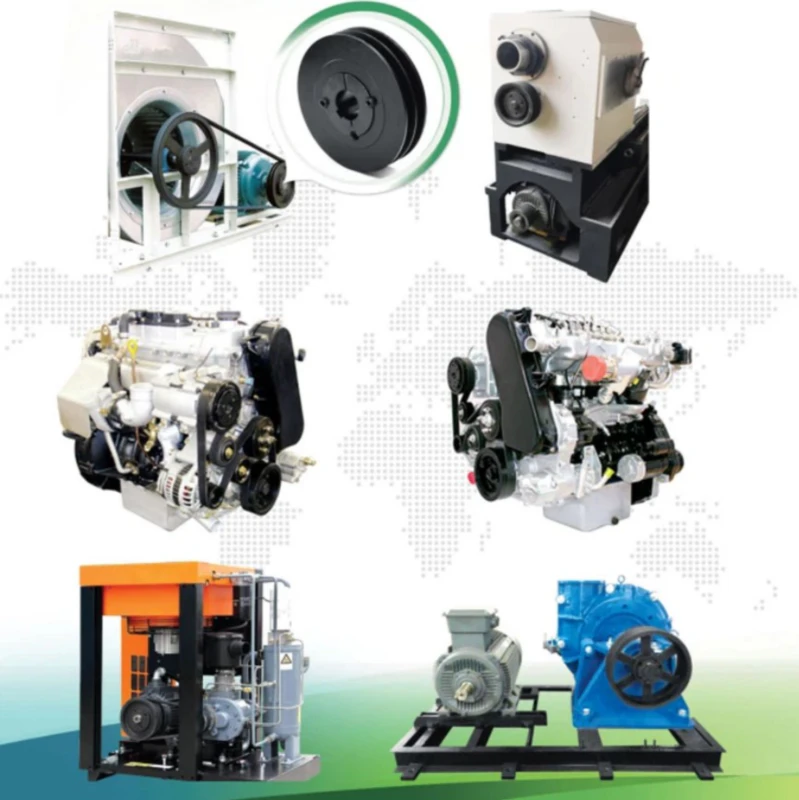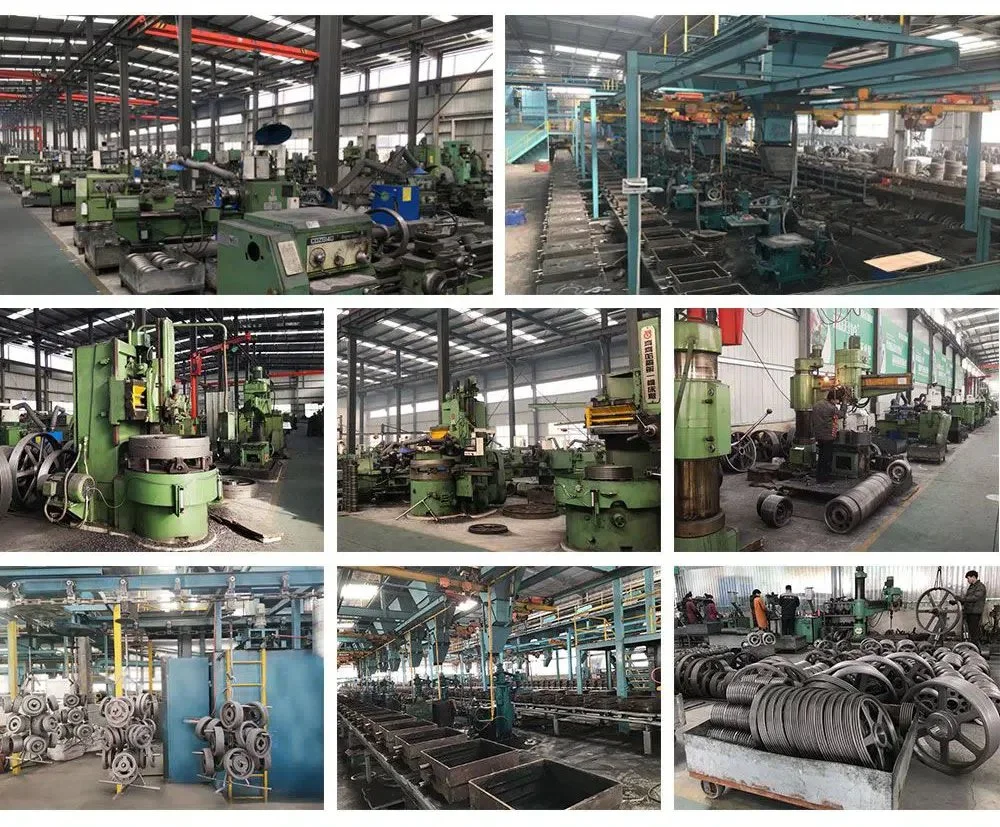Paper Mill Taper Pulley
1. Introduction to Taper Pulleys
Taper pulleys are pivotal components in various mechanical systems, including paper mills. They are designed to transfer motion and force between shafts with minimal slippage, ensuring efficient and reliable power transmission. By examining their key features and applications, we can better understand their significance in the industry.
2. The Evolution of Paper Mill Machinery
The machinery used in paper mills has evolved significantly over the years. From early manual presses to sophisticated automated systems, the role of taper pulleys in these machines has remained crucial. Understanding this evolution helps appreciate the technological advancements that have made modern paper production more efficient.
3. Design Features of Taper Pulleys
Taper pulleys are characterized by their unique design that allows for easy installation and removal. The tapered bore ensures a tight fit, reducing the risk of slippage and improving torque transmission. These features make them ideal for high-performance applications in demanding industrial environments.
4. Materials Used in Taper Pulley Manufacturing
The choice of materials for taper pulley manufacturing is critical for ensuring durability and performance. Common materials include cast iron, steel, and aluminum, each offering distinct advantages. Cast iron provides excellent wear resistance, while steel offers superior strength, and aluminum provides a lightweight alternative.
5. Types of Taper Pulleys
There are various types of taper pulleys, each designed for specific applications. V-belt taper pulleys, timing belt taper pulleys, and flat belt taper pulleys are some common variants. Each type has unique characteristics that make it suitable for different operational requirements.
6. Applications in Paper Mills
Taper pulleys play a crucial role in paper mills, where they are used in various stages of the production process. From pulp processing to paper finishing, these pulleys ensure smooth and efficient operation of machinery, minimizing downtime and enhancing productivity.
7. Benefits of Using Taper Pulleys
The use of taper pulleys offers several benefits, including improved power transmission efficiency, reduced maintenance costs, and increased equipment lifespan. Their ability to handle high loads and speeds makes them indispensable in heavy-duty industrial applications.
8. Installation and Maintenance of Taper Pulleys
Proper installation and maintenance are crucial for ensuring the optimal performance of taper pulleys. Following manufacturer guidelines and using appropriate tools can prevent common issues such as misalignment and wear. Regular inspection and lubrication can further extend the lifespan of these components.
9. Common Issues and Troubleshooting
Despite their robust design, taper pulleys can experience issues such as misalignment, wear, and slippage. Understanding common problems and their causes can help in troubleshooting and maintaining the efficiency of the machinery. Solutions often involve adjusting alignment, replacing worn parts, and ensuring proper tension.
10. Innovations in Taper Pulley Technology
Recent advancements in taper pulley technology have led to the development of more efficient and durable designs. Innovations such as improved materials, enhanced manufacturing processes, and advanced monitoring systems have significantly improved the performance and reliability of these components.
11. Environmental Impact and Sustainability
The manufacturing and use of taper pulleys have an environmental impact that needs to be considered. Sustainable practices, such as using eco-friendly materials and optimizing production processes, can help reduce this impact. Additionally, recycling and reusing components can contribute to sustainability efforts.
12. Cost Considerations
Cost is a significant factor in the selection and use of taper pulleys. While initial costs may vary depending on materials and design, long-term savings can be achieved through reduced maintenance and increased efficiency. Evaluating the total cost of ownership is essential for making informed decisions.
13. Customization and Special Requirements
Customization is often necessary to meet specific operational requirements in paper mills. Custom taper pulleys can be designed to fit unique machinery configurations, improving performance and reliability. Manufacturers offer various customization options, including material selection, size, and design features.
14. Industry Standards and Regulations
Compliance with industry standards and regulations is crucial for ensuring the safety and reliability of taper pulleys. Standards such as ISO and ANSI provide guidelines for design, manufacturing, and testing. Adhering to these standards helps maintain quality and consistency in production.
15. Selecting the Right Taper Pulley
Selecting the right taper pulley involves considering several factors, including load capacity, speed, and environmental conditions. Consulting with experts and utilizing selection tools can help identify the most suitable pulley for a specific application, ensuring optimal performance and longevity.
16. Case Studies in Paper Mills
Case studies provide valuable insights into the practical applications and benefits of taper pulleys in paper mills. Analyzing real-world examples can highlight best practices and lessons learned, offering guidance for improving efficiency and reliability in similar settings.
17. Comparing Taper Pulleys with Other Types
Comparing taper pulleys with other types of pulleys, such as flat belt pulleys and timing belt pulleys, can help in understanding their unique advantages. Each type has specific applications and benefits, making it essential to choose the right pulley for the intended use.
18. The Role of Technology in Manufacturing
Advanced technology plays a significant role in the manufacturing of taper pulleys. Automation, precision machining, and quality control systems ensure high-quality production and consistency. Embracing technological advancements can lead to improved efficiency and reduced production costs.
19. Future Trends in Taper Pulleys
The future of taper pulleys is likely to be influenced by trends such as increased automation, the use of smart materials, and enhanced sustainability practices. Staying abreast of these trends can help manufacturers and users adapt to changing demands and maintain a competitive edge.
20. The Importance of Supplier Selection
Choosing the right supplier is crucial for ensuring the quality and reliability of taper pulleys. Factors to consider include the supplier’s reputation, manufacturing capabilities, and commitment to quality standards. Building strong relationships with trusted suppliers can lead to long-term benefits and improved operational efficiency.
21. Taper Pulley Accessories
Various accessories, such as bushings, keyways, and tensioners, are used with taper pulleys to enhance their functionality and performance. Understanding the role of these accessories and selecting the right ones can contribute to the overall efficiency and reliability of the system.
22. Employee Training and Safety
Proper training and safety protocols are essential for the safe and effective use of taper pulleys in paper mills. Employees should be trained in correct installation, maintenance, and troubleshooting procedures to prevent accidents and ensure optimal performance. Safety measures, such as guarding and regular inspections, further contribute to a safe working environment.
23. Case Study: Improved Efficiency in a Paper Mill
A detailed case study showcasing how the implementation of high-quality taper pulleys led to improved efficiency and reduced downtime in a paper mill. This case study highlights the challenges faced, solutions implemented, and the positive outcomes achieved, offering valuable insights for similar applications.
24. The Economic Impact of Taper Pulleys
The economic impact of using taper pulleys extends beyond the initial purchase cost. Factors such as reduced maintenance, increased equipment lifespan, and improved production efficiency contribute to overall cost savings. Analyzing these economic benefits helps justify the investment in high-quality taper pulleys.
25. Conclusion: The Future of Paper Mill Taper Pulleys
In conclusion, taper pulleys are indispensable components in paper mills, offering numerous benefits such as improved power transmission, reduced maintenance, and increased efficiency. As technology continues to advance, the future of taper pulleys looks promising, with innovations and trends shaping their development. By understanding their importance and selecting the right products, paper mills can achieve optimal performance and sustainability.

Company and Product Promotion
Our company is a leading player in China’s pulley market. We specialize in various types of pulleys, including HTD pulley, plastic pulley, timing pulley, belt idler pulley, belt pulley, v pulley, compound pulley, and heavy-duty pulley. With over 300 sets of fully automated CNC production equipment and fully automated assembly equipment, we ensure high-quality products at competitive prices and exceptional service. Customers are welcome to provide drawings and samples for customization.

Author: Czh